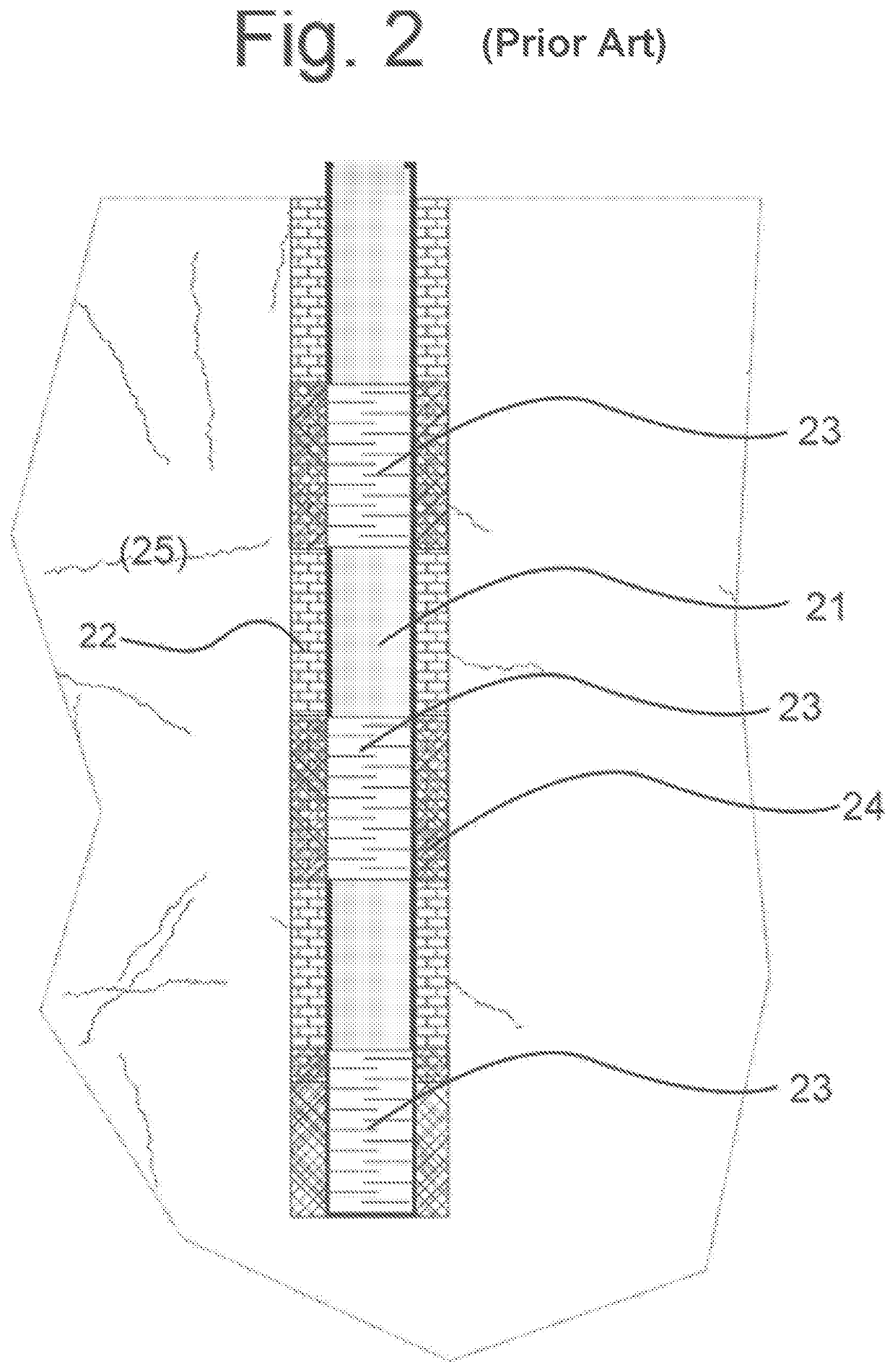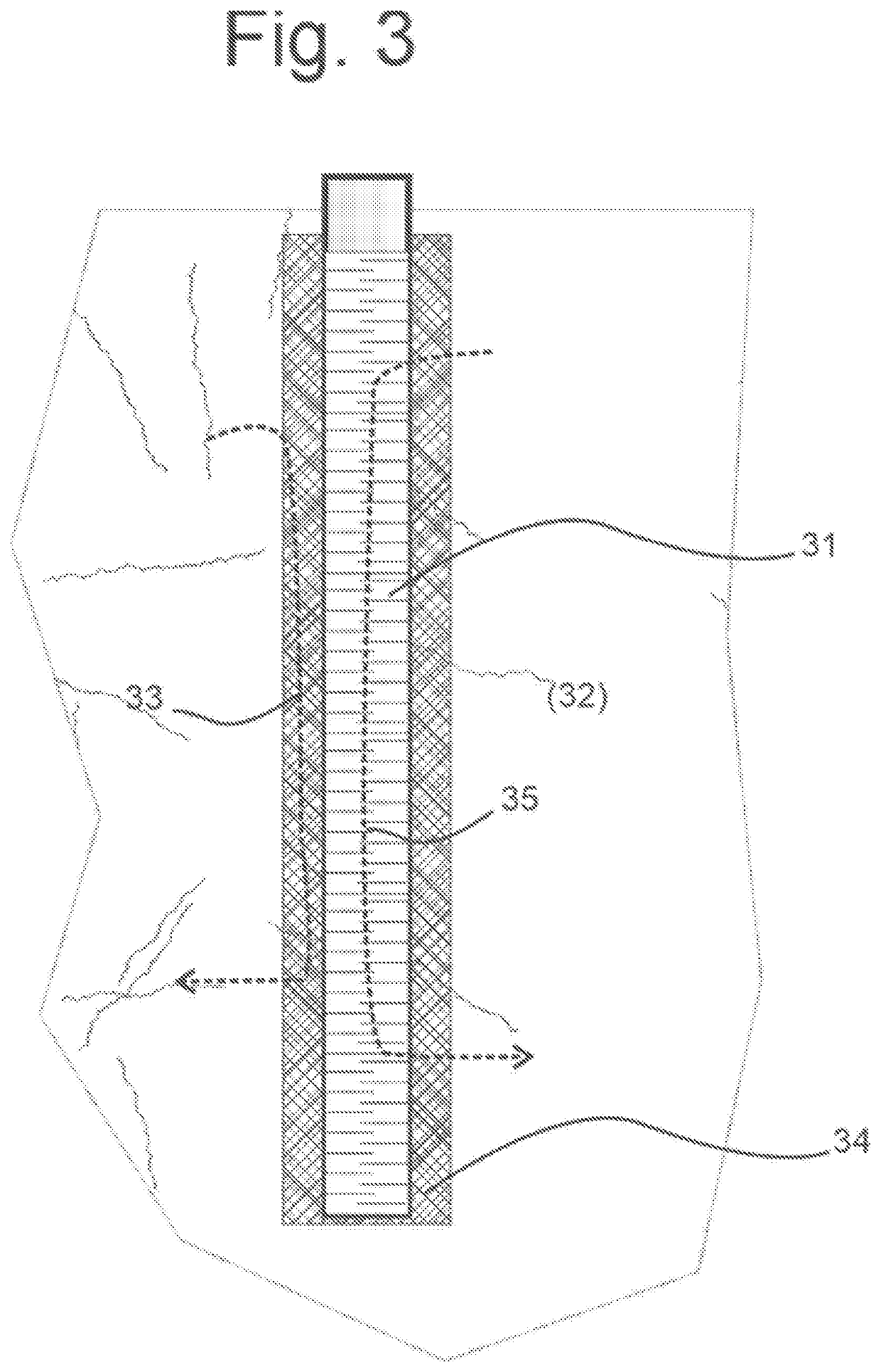Optimal Screened Subsurface Well Design
a subsurface well and optimal technology, applied in the field of multi-level water sampling systems, can solve the problems of not being of a sufficiently low conductivity and unattractive use of wire-wrapped screens with this method, and achieve the effect of facilitating a variety of useful measurement of formation characteristics and lateral conductivity
- Summary
- Abstract
- Description
- Claims
- Application Information
AI Technical Summary
Benefits of technology
Problems solved by technology
Method used
Image
Examples
Embodiment Construction
[0026]A traditional and typical borehole well for collection of water samples for analysis is shown in FIG. 1. It includes a casing 11 set in a walled borehole 12 in a surrounding subsurface geologic formation 13. At the bottom end of the casing 11 is a permeable casing section 14 called a “screen,” which may be perforated with holes or slots cut through the casing section to allow water flow from the formation 13, through the casing, and into interior of the casing 11. The annular space 15 between the casing 11 and the borehole wall 12 is filled with a sealing material (e.g., a grout) above the screen 14 (i.e., higher in the borehole than the screen), and with sand 17 in the space between the screen section 14 and the hole wall 12. The slots of the casing screen 14 are smaller than the particles of sand 17 to prevent the sand 17 flowing into the interior of the casing 11. A water sample is obtained from the interval of the screen 14 by emplacing a pump (not shown) below the water t...
PUM
 Login to View More
Login to View More Abstract
Description
Claims
Application Information
 Login to View More
Login to View More - R&D
- Intellectual Property
- Life Sciences
- Materials
- Tech Scout
- Unparalleled Data Quality
- Higher Quality Content
- 60% Fewer Hallucinations
Browse by: Latest US Patents, China's latest patents, Technical Efficacy Thesaurus, Application Domain, Technology Topic, Popular Technical Reports.
© 2025 PatSnap. All rights reserved.Legal|Privacy policy|Modern Slavery Act Transparency Statement|Sitemap|About US| Contact US: help@patsnap.com



